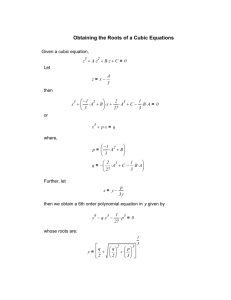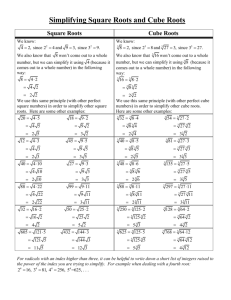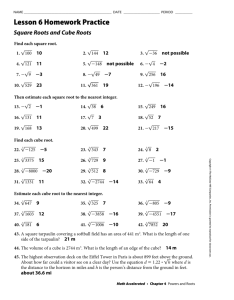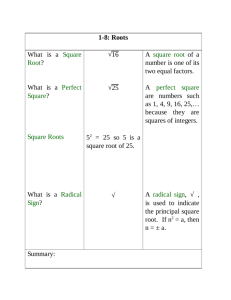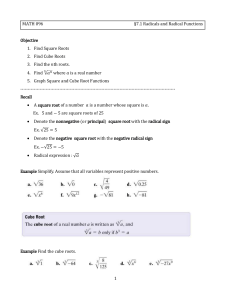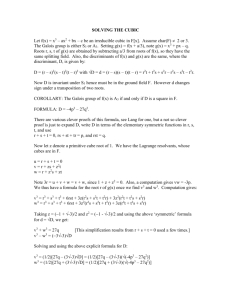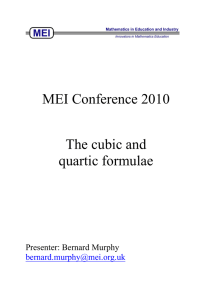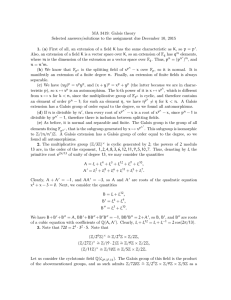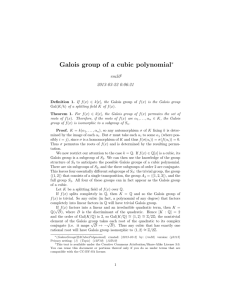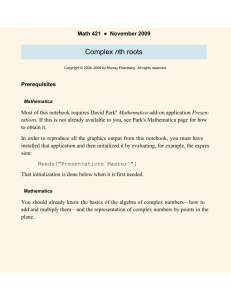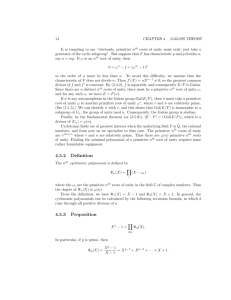Solving the Cubic
advertisement
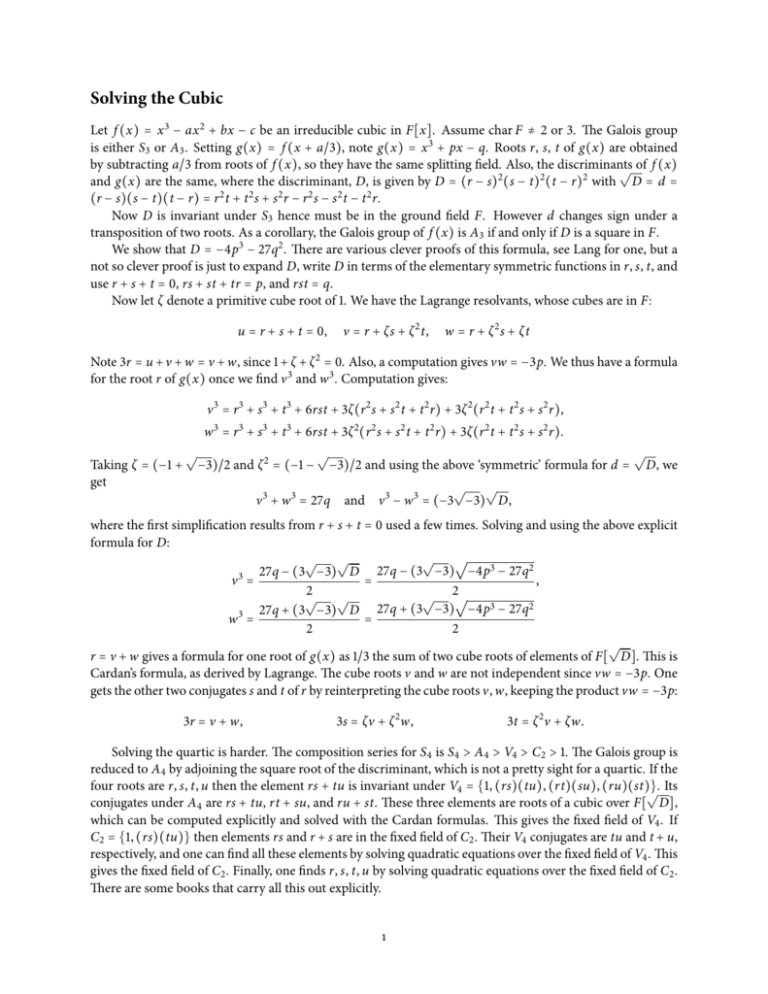
Solving the Cubic
Let f (x) = x − ax + bx − c be an irreducible cubic in F[x]. Assume char F ≠ or . The Galois group
is either S or A . Setting g(x) = f (x + a/), note g(x) = x + px − q. Roots r, s, t of g(x) are obtained
by subtracting a/ from roots of f (x), so they have the same splitting field. Also, the discriminants
√ of f (x)
and g(x) are the same, where the discriminant, D, is given by D = (r − s) (s − t) (t − r) with D = d =
(r − s)(s − t)(t − r) = r t + t s + s r − r s − s t − t r.
Now D is invariant under S hence must be in the ground field F. However d changes sign under a
transposition of two roots. As a corollary, the Galois group of f (x) is A if and only if D is a square in F.
We show that D = −p − q . There are various clever proofs of this formula, see Lang for one, but a
not so clever proof is just to expand D, write D in terms of the elementary symmetric functions in r, s, t, and
use r + s + t = , rs + st + tr = p, and rst = q.
Now let ζ denote a primitive cube root of . We have the Lagrange resolvants, whose cubes are in F:
u = r + s + t = ,
v = r + ζs + ζ t,
w = r + ζ s + ζt
Note r = u + v + w = v + w, since + ζ + ζ = . Also, a computation gives vw = −p. We thus have a formula
for the root r of g(x) once we find v and w . Computation gives:
v = r + s + t + rst + ζ(r s + s t + t r) + ζ (r t + t s + s r),
w = r + s + t + rst + ζ (r s + s t + t r) + ζ(r t + t s + s r).
Taking ζ = (− +
get
√
−)/ and ζ = (− −
√
√
−)/ and using the above ‘symmetric’ formula for d = D, we
v + w = q
√ √
and v − w = (− −) D,
where the first simplification results from r + s + t = used a few times. Solving and using the above explicit
formula for D:
√ √
√ √
q − ( −) D q − ( −) −p − q
=
,
v =
√
√
√ √
q + ( −) D q + ( −) −p − q
w =
=
√
r = v + w gives a formula for one root of g(x) as / the sum of two cube roots of elements of F[ D]. This is
Cardan’s formula, as derived by Lagrange. The cube roots v and w are not independent since vw = −p. One
gets the other two conjugates s and t of r by reinterpreting the cube roots v, w, keeping the product vw = −p:
r = v + w,
s = ζv + ζ w,
t = ζ v + ζw.
Solving the quartic is harder. The composition series for S is S > A > V > C > . The Galois group is
reduced to A by adjoining the square root of the discriminant, which is not a pretty sight for a quartic. If the
four roots are r, s, t, u then the element rs + tu is invariant under V = {, (rs)(tu), (rt)(su), (ru)(st)}.
√ Its
conjugates under A are rs + tu, rt + su, and ru + st. These three elements are roots of a cubic over F[ D],
which can be computed explicitly and solved with the Cardan formulas. This gives the fixed field of V . If
C = {, (rs)(tu)} then elements rs and r + s are in the fixed field of C . Their V conjugates are tu and t + u,
respectively, and one can find all these elements by solving quadratic equations over the fixed field of V . This
gives the fixed field of C . Finally, one finds r, s, t, u by solving quadratic equations over the fixed field of C .
There are some books that carry all this out explicitly.

